TW: Shogun 2 – Fall of the Samurai Review
Posted by
with_teeth26
on
The making of an expansion that improves upon one of the most seamless strategy games of the last several years is no easy prospect. Any major changes might upset the careful balance that Creative Assembly established with last year’s phenomenal Total War: Shogun 2. With Fall of the Samurai, Creative Assembly largely plays it safe by fixing the few problems Shogun 2 had, and adding a few new elements that tweak the way you play the game. On the surface, Fall of the Samurai just seems like a content pack with new units, clans and maps, but in reality it is more than this, as succeeding at this expansion’s campaign allows for a bit more strategic freedom than last year’s release.
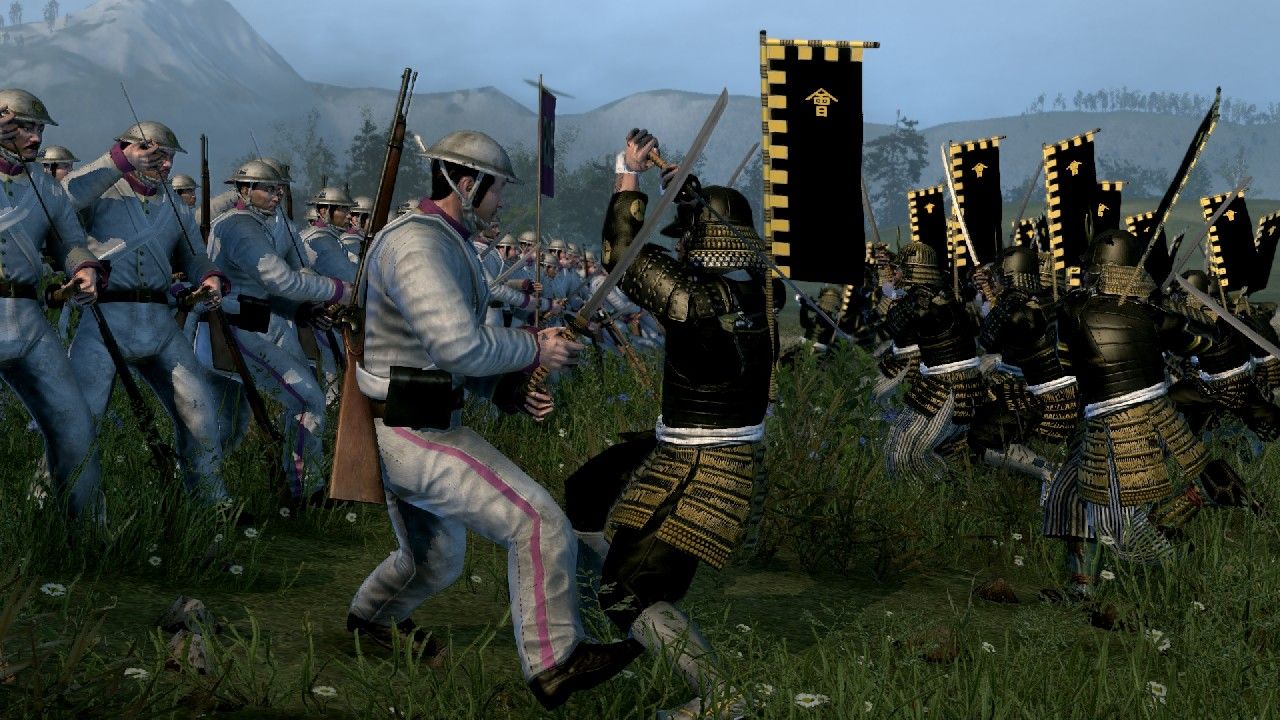
The main below-the-hood difference in Fall of the Samurai’s campaign is change of the win conditions. In Shogun 2, you chose a clan and fought to gain control of a certain number of provinces, including the nation’s capital, Kyoto. You then had to hold Kyoto for a year in order to become Shogunate and win the campaign. In Fall of the Samurai, which takes place a few hundred years after Shogun 2, you choose a clan that is either loyal to the Shogun, or loyal to the Imperials. You must then capture a certain number of provinces, but also meet a requirement of a certain number of loyal provinces. You can do this by becoming friendly with other clans by spreading your influence, or by simply conquering a larger number of provinces.
This altered overarching goal gives you a bit more freedom in how you go about capturing provinces and expanding your empire. Shogun 2 forced you to drive into the heart of Japan in order to capture the capital province. In Fall of the Samurai, you are largely free to capture whichever provinces you want. In my first campaign, I opted to Island hop along the east coast of Japan and avoid the mainland while trying to keep peaceful relations with the other imperial-friendly clans on the mainland in order to keep trade open. This worked out very well early on, but it became difficult to keep my trade routes open since enemy naval fleets would attack them quite regularly, hampering my economy and resources. I eventually fielded a strong enough navy to keep my vast coastlines safe, which brings me to another of the biggest changes in Fall of the Samurai.
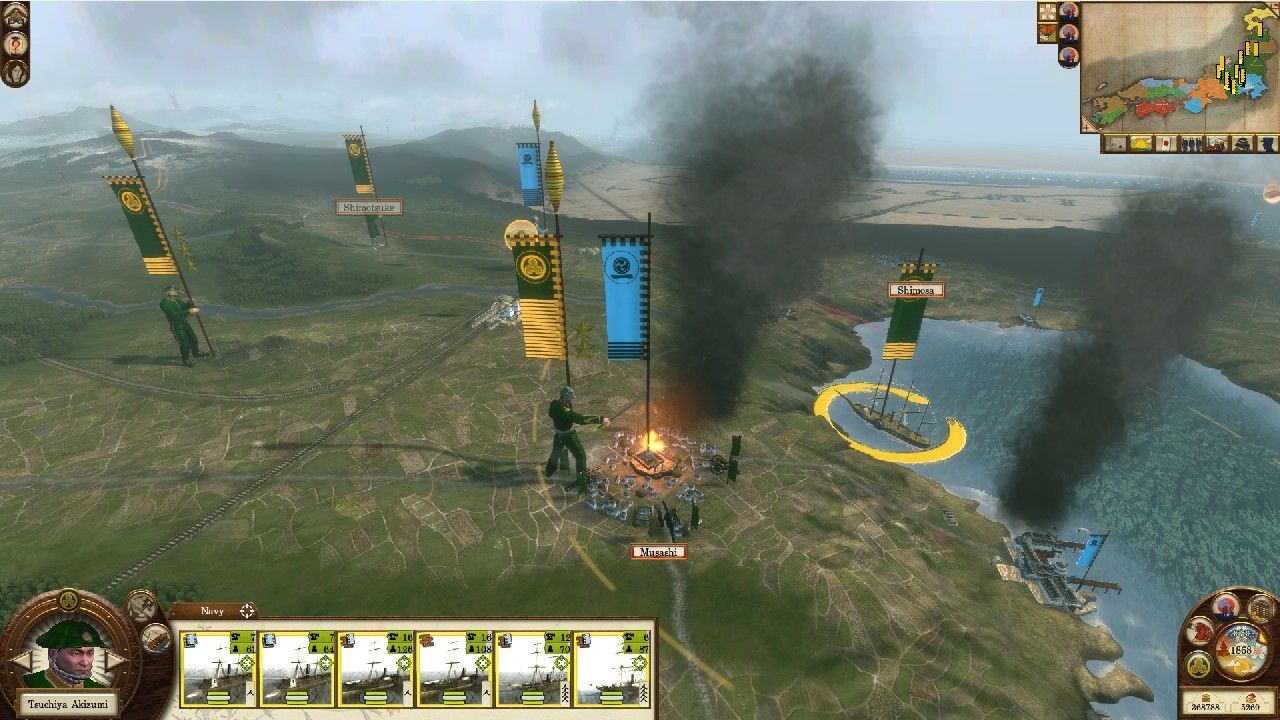
While Shogun 2 allowed you to build a naval fleet and featured some interesting although somewhat ponderous sea battles, there wasn’t really much incentive to have a strong navy. Once you got a foothold on the mainland of Japan, most of your trade routes were over land and you didn’t need to worry about defending coastlines. In Fall of the Samurai, there are many more reasons that you might want to build a strong navy. For one thing, if you opt to build an empire that contains a lot of islands, you will have many trade routes that span oceans. Enemy AI will be much more aggressive this time in attacking your trade routes, so it is important to keep them protected.
Since the ships you have at your disposal are armed with significantly more firepower than in Shogun 2, you will now also be able to complete naval bombardments both in and out of battles. You can harass enemy buildings and armies in order to soften up a province for an attack, or damage an army marching towards your poorly defended city. When in a battle, you can call in a couple of naval bombardments that if well placed can essentially turn the tide of battle. One thing that bothered me with the naval bombardments is that the size of your fleet seems to have no impact on the strength of a bombardment. A single gunship will create a bombardment the same size as a massive fleet. The enemy AI will take advantage of this, and will send single ships to harass undefended coastlines. After realm divide, which returns near the end of a campaign, the enemies naval maneuvering can become a downright nuisance, as trying to destroy these solitary enemy ships usually winds up in wild goose chases of them retreating and you giving chase turn after turn.
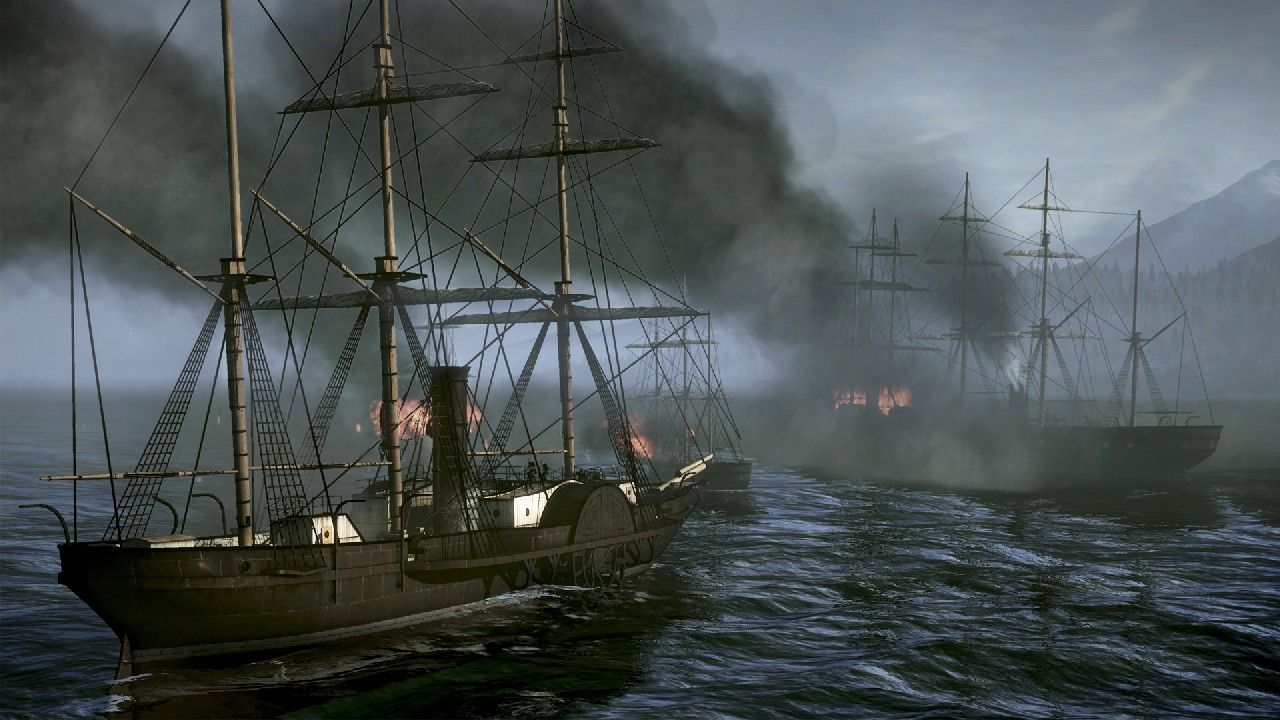
The real-time naval battles are also much more entertaining with the increase in firepower at your disposal. There are a huge number of different ships you can build, including formidable torpedo-boats and ironclads. Battles are now fought at long range, and if enough firepower is poured into a single ship it will explode in satisfying blast. You can also take control of individual ships and aim your shots, which makes these naval battles even more entertaining. Unfortunately, the enemy AI in naval battles is fairly brain dead. Enemy ships will often sit in their starting position until you start shooting at them, at which point they start moving around seemingly aimlessly. Naval battles are still thrilling to watch however, and make up only a very small facet of what is otherwise a truly excellent game.
While the format of land battles has remained unchanged from Shogun 2, the units are completely different, allowing for battles which play out in a very different way. Unsurprisingly, there is a much bigger emphasis on firearms and artillery here, which means more battles are fought at range rather than in gigantic melees. You can still opt to shun modernization and fight battles with traditional units, but this makes things very challenging. The enemy AI in land battles has improved significantly from Shogun 2; when attacking castles enemy armies will try first to capture gatehouses to let their cavalry units in, and failing that, the horsemen will dismount and attack on foot. You also have the option to take third-person control of any piece of artillery, such as cannons or Gatling guns, but it is hard to find a chance to do this as you often need to continually update orders to your troops. Land battles are consistently thrilling in Fall of the Samurai thanks largely to the great unit variety and improved enemy artificial intelligence.
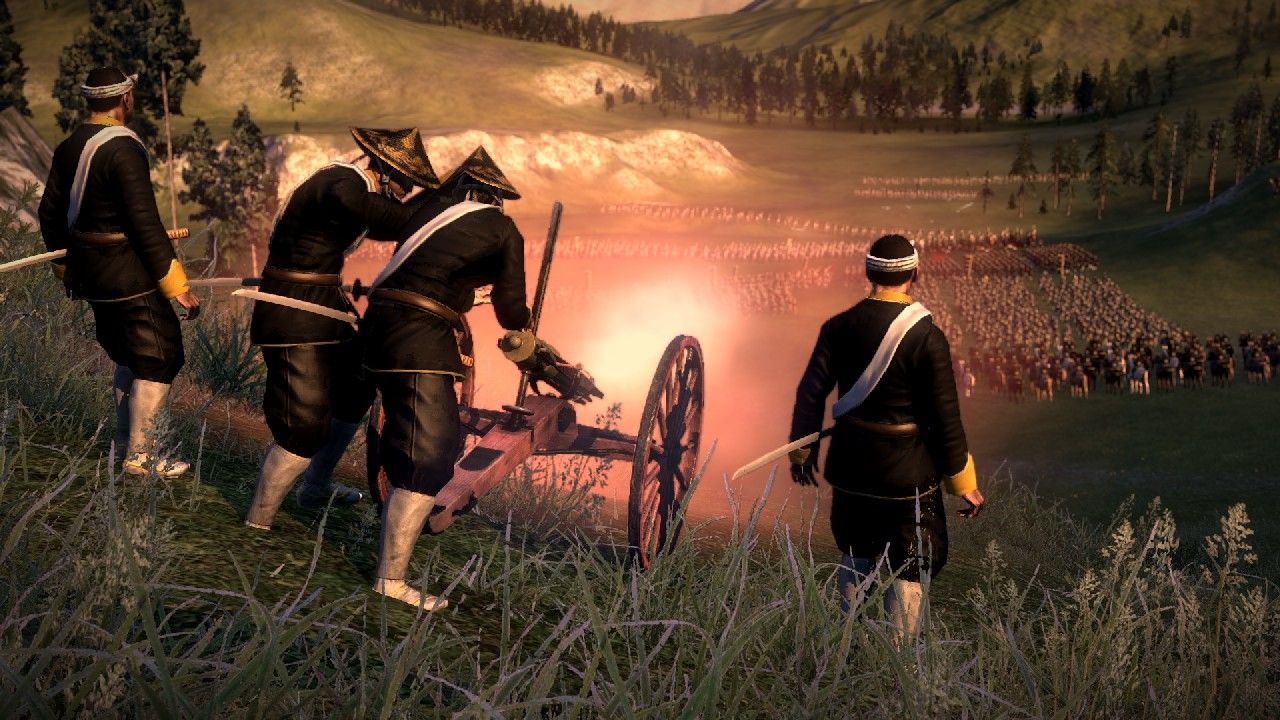
There have also been some other changes made to the campaign that don’t revolve around battles. You need to worry about clan modernization; if you modernize too quickly, your people will become unhappy and will be more likely to revolt. Foreign dignitaries act as agents, and can be used to spy on and sabotage enemy armies. If you complete the right research and have the right resources, you can build railways across your provinces to speed troop movements, making it much easier to defend your empire during realm divide. Many of these changes are subtle and don’t impact the moment-to-moment gameplay, but they do change the ambiance of the game to that of a society undergoing industrialization and modernization. All of the new features here are good, although some of them such as the naval bombardments could use a bit of tweaking.
The main competitive multiplayer mode from Shogun 2, dubbed Avatar Conquest, has returned here largely unchanged in structure. You will still take over provinces on a map by winning battles against human opponents in order to unlock new units and gain bonuses for your armies. This mode now includes a more robust tutorial however, with the first few battles being against AI opponents, which makes easing into this mode significantly less daunting. The units have changed to match the time period, leading to battles that are slower paced and more focused on out-maneuvering your opponent. You also have the option to enable large-scale battles which allow each player to field a remarkable 40 units each, resulting in some of the biggest battles ever seen in a Total War game. The ability to play through the campaign cooperatively remains as well, which is arguably the most enjoyable way to go through it.
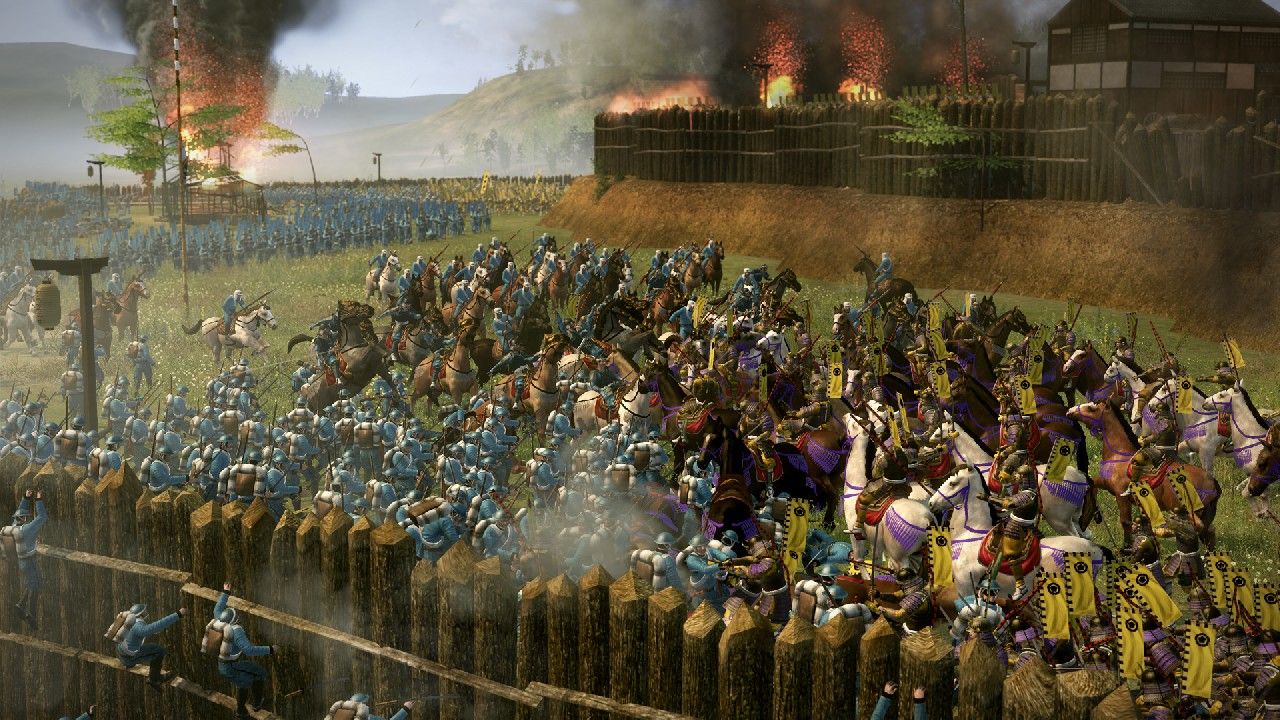
While Shogun 2 was already one of the best looking strategy games on the market when it came out last year, Creative Assembly have really outdone themselves here. Direct X 11 enhancements made to the engine in a patch to Shogun 2 last year have been included, as well as many enhancements to smoke and particle effects that make the gun battles absolutely spectacular. Clouds of smoke will rise above firing lines and blow away with the wind. Ships will take damage and sway in the waves when hit with cannon fire, while men jump overboard when they catch fire. The engine also supports anti-aliasing and tessellation, which makes everything from ropes on a ships mast to distant hills during battles look very smooth. Even more impressive is how well the game runs with the settings turned up, with all but the largest of battles running very smoothly. The artistic GUI from Shogun 2 has returned, and given that it is incredibly functional and visually appealing there is no reason for an overhaul here.
The audio in Shogun 2 is almost as impressive as the visuals. Gunfire sounds sharp, marching troops thunderous, and ships crackle and splinter as they take damage. Many of the same tracks form Shogun 2 return, but there are a good number of new ones that feature stringed instruments that are really quite beautiful and set the tone during the campaign. The one component of the audio that seems like a small step backwards is the voice acting during battles; the heavily accented yet characterful battle narrator of Shogun 2 has been replaced by American and British accented individuals who will dryly inform you of goings on in skirmishes. The voice acting is far from bad, but lacks the charm of Shogun 2’s.
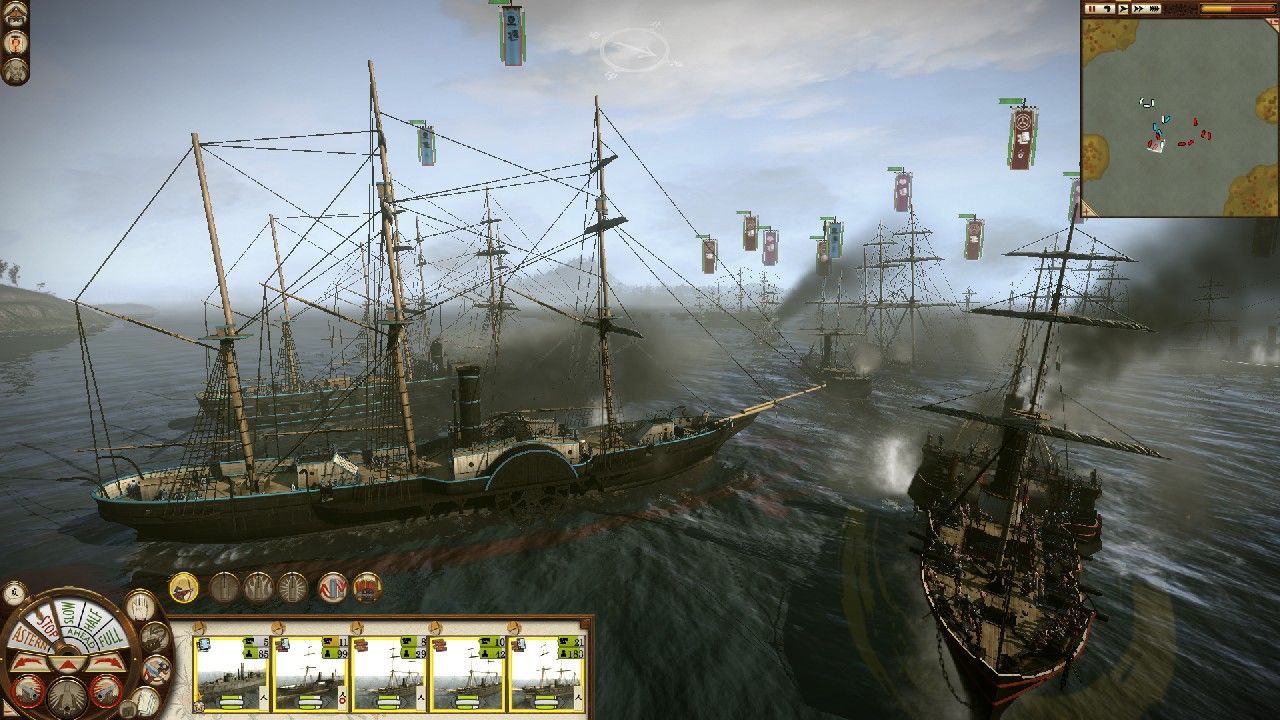
If you enjoyed last year’s Shogun 2 and like the idea of new units, clans and strategic options that revolve around the same gameplay mechanics, Fall of the Samurai is a great buy. You will want to play through the campaign at least twice to experience all the game has to offer, and each campaign will take from 10 to 30 hours depending on if you choose a short or long campaign and how often you take manual control of battles. Paired with the robust multiplayer component, you get more than your monies worth with the thirty dollar price tag as Fall of the Samurai essentially contains everything Shogun 2 did at launch. If you haven’t picked up Shogun 2 but are interested in the series, which game you get should be determined by which time period you find more interesting as the engine and gameplay fixes applied in Fall of the Samurai have been added to Shogun 2 in a patch. Despite the need for some of the new elements to be tweaked, Fall of the Samurai is an excellent expansion to one of the finest strategy games of the last few years.
